Blogger Rhea Mitra-Dalal’s Sartorial Flavours
Natural and fuss-free with a kick, best describes both her style and palate. Verve serves up some striking silhouettes — tent, trapeze, the kaftan shape, straight and bat sleeves — as the blogger and caterer reveals the philosophy behind how she eats, dresses and lives
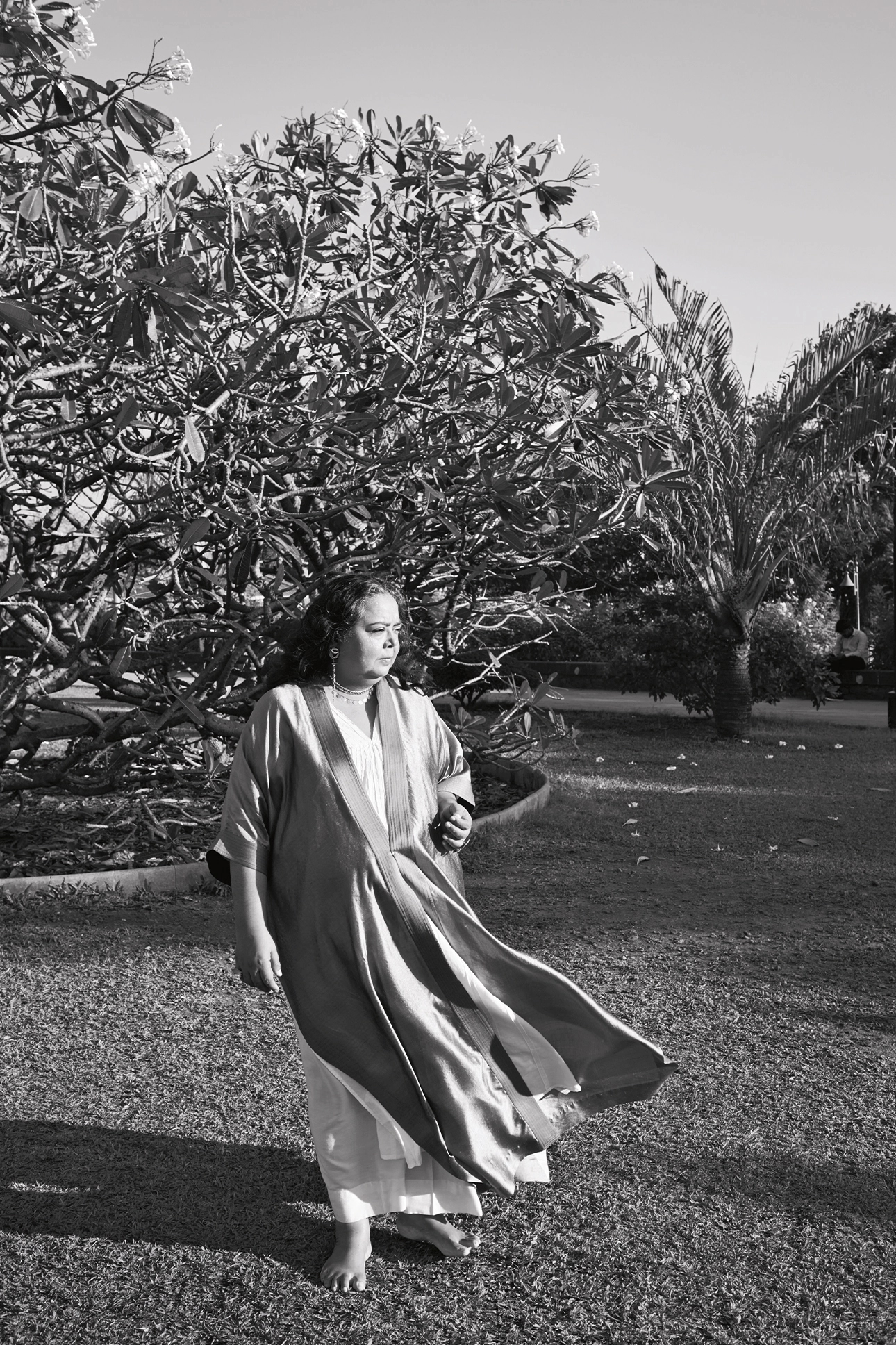
KAFTAN
Full Flow
What is your first food-related memory?
Sitting under the dining table as a toddler, in my father’s ancestral house in Dhakuria, Kolkata, eating a bowl of potatoes that had been fried for jhol (curry), given to me by my grandmother. I was the first granddaughter after a string of grandsons, and I was the apple of her eye. She was quite strict with her daughters-in-law, but she broke all her rules for me — at least that’s what my mother and aunts say.
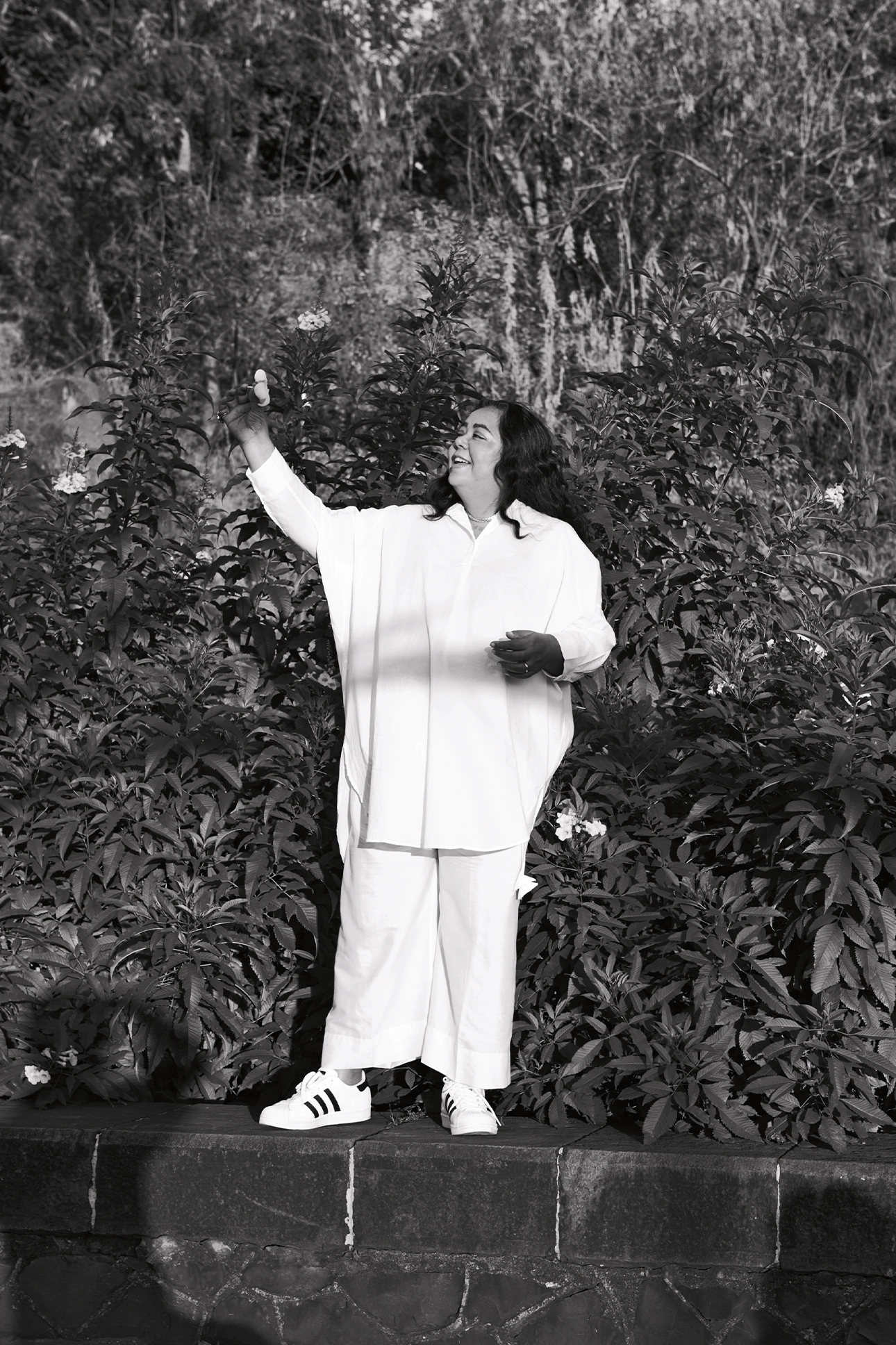
BAT SLEEVES
Cut Loose
You feature two distinctive cuisines — Parsi and Bengali — on your blog, Euphorhea. Tell us more about them.
Parsi meals are simpler; it’s one main dish, rice and a side dish at the most, for lunch. Combinations are set: dhansak with brown rice, curry with white steamed rice, pulao with masala ni daar (masala dal). Pao and other breads are common, considering the baking skills of the community. Bengali meals, in contrast, are quite elaborate. Combinations aren’t fixed; the meal is structured around plain steamed rice. The order of the dishes is fixed, however. First, a small serving of the bitter appetite enhancer, and next is dal with bhaja or fries, vegetables, small fish, large fish, meat, chutney and, finally, dessert. What’s common is the love for the combination of a simple dal paired with hot rice and fried fish. I cook this very often, varying the repertoire with a Bengali-style masoor dal and Parsi-style fried surmai or ravas (types of fish), or plain mohri daar (yellow dal) and fried bhetki (type of fish).
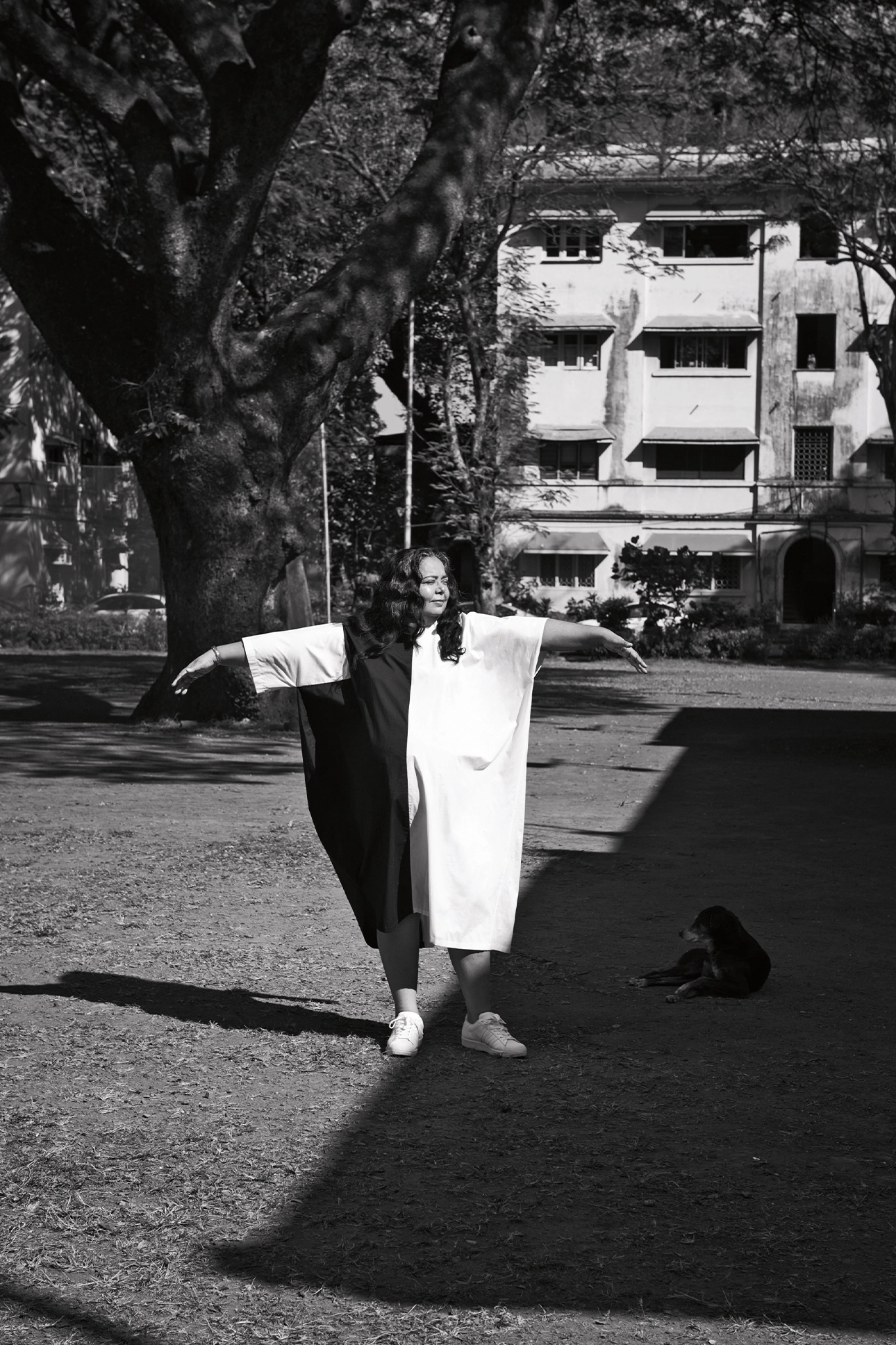
STRAIGHT
Right Angles
You started your blog not to become an influencer but to self-reflect. Do you approach fashion in the same way?
There was no concept of influencers when I started blogging 13 years ago. It still works the same way for me even today — as a journal where I note down musings and dishes I like to cook, a means of self-expression. I have similar views on fashion; I don’t stress over it. I know what I like and what I’m comfortable in. I don’t like complicated recipes, and I don’t like complicated clothes. Simple recipes and easily available ingredients rule my kitchen, while in my wardrobe it’s natural fabrics and simple lines — in mainly Indian wear. Or jeans and T-shirts. I don’t own any formal wear, and if I need to dress up, I throw on a sari. There’s nothing as stylish as a sari. And I occasionally add a bit of oomph to the basics with a beautiful dupatta, nice earrings, or maybe a bindi.
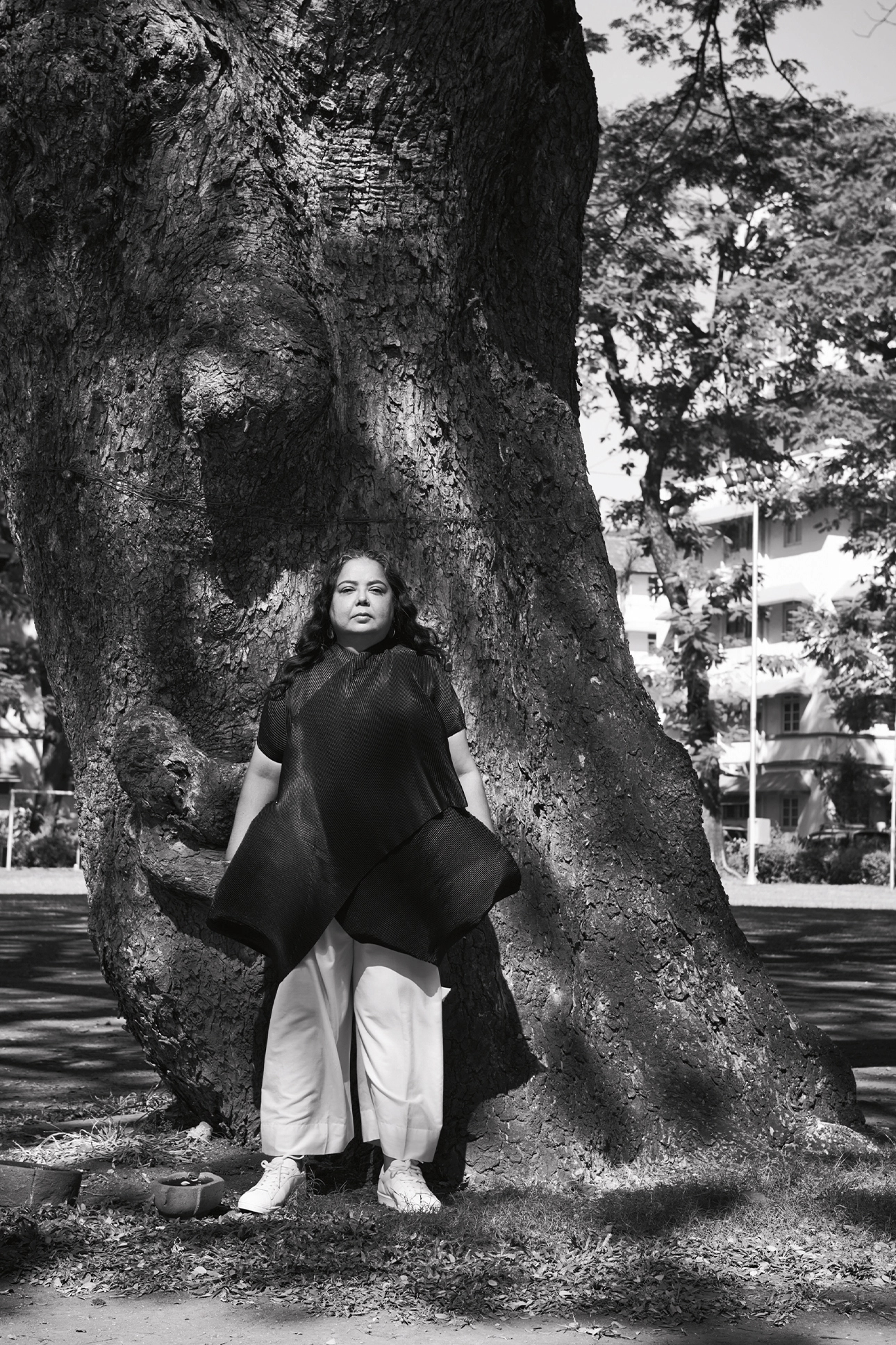
TRAPEZE
Shape Up
How has your relationship with food affected your personal style?
Once we start paying attention to food and diet, we realise that it is required in all spheres of life. Losing weight thanks to this mindfulness definitely gave me confidence to make an effort towards my appearance. I stopped colouring my hair and have fallen in love with the halo of grey that frames my face. And now I can pick up clothes off the rack too. What a thrill that is!
Larger women in India have always had a tough time buying nice clothes, but it finally seems that brands and stores are realising that bigger women also have money and enjoy retail therapy and good clothes.
Fabindia, Jaipuriya and Anokhi are my favourite brands. I also get a lot of custom-made saris and blouses from Queen of Hearts by Deepa Mehta, who works with traditional Indian weavers and craftsmen for fabrics, block prints and embroidery.
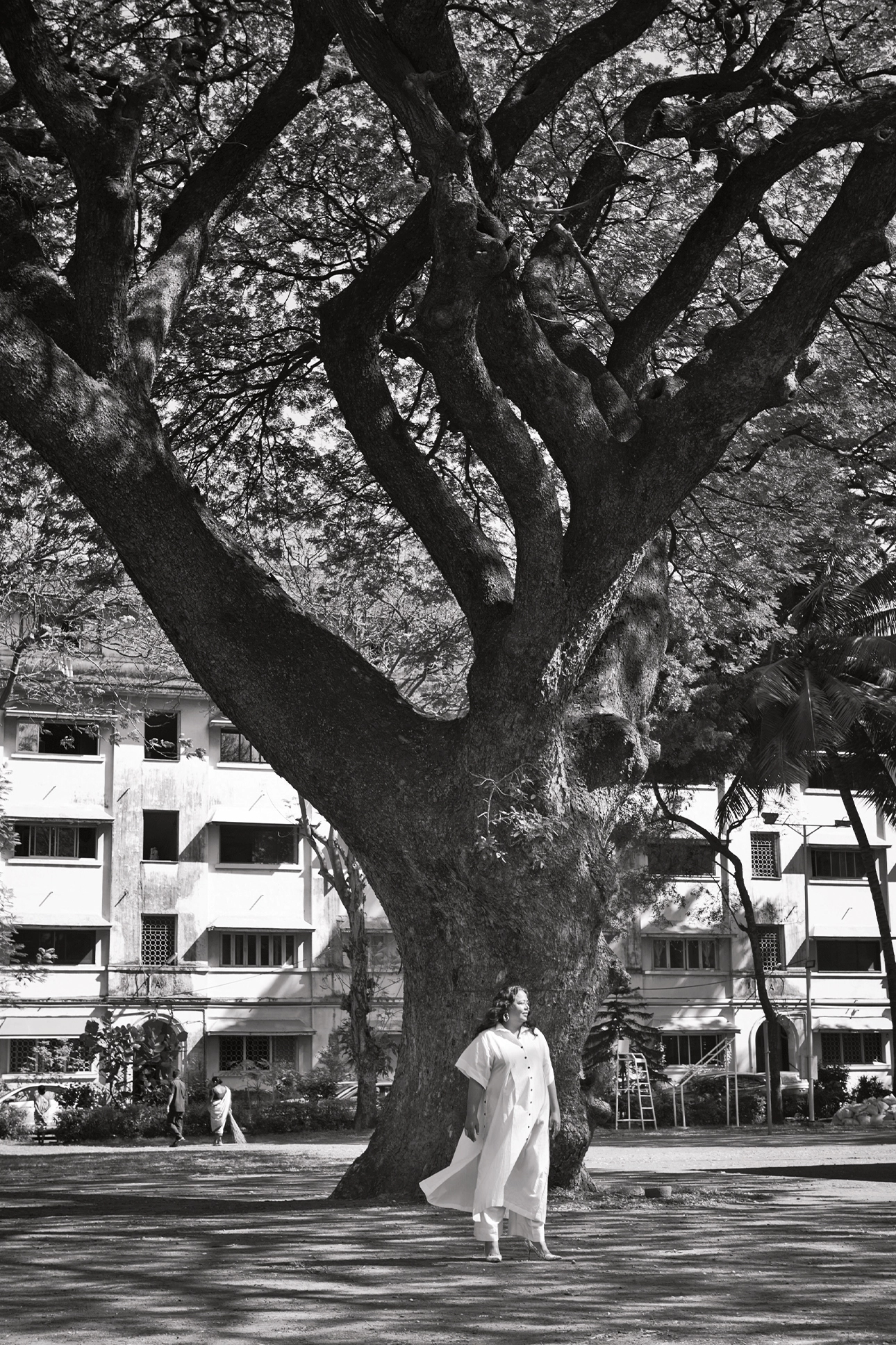
TENT
Blank Canvas
If you had to compare your favourite look from the shoot with a food item, which one would it be?
I wore a lovely white dress that I loved. I don’t wear dresses at all, certainly not outdoors. It was comfortable and beautifully cut; the fabric was handwoven, and I felt beautiful wearing it. It felt familiar and yet it was not. I would compare it to the classic roast chicken by Jamie Oliver, for which he roasts the bird in milk. The result is superb. When I tried it for the first time I was sceptical. It was familiar as far as what it was — a roast chicken — something I make very often and very well if I might say so. But it was roasted in milk – not an ingredient I’m fond of and certainly not something I’d have ever used to roast a chicken in. I did take that leap of faith and the result was beautiful.
The tree pictured here is almost 200 years old, which reflects history and culture synonymous with your culinary practice and personal style. Which is the oldest piece of history in your wardrobe and your kitchen?
The oldest pieces in my wardrobe would have to be a deep-purple satin ghat sari inherited from my husband’s maternal great-grandmother and a classic Benarasi silk that was gifted to me by my maternal grandmother’s sister. The ghat is a classic Parsi sari with all-over embroidery. There is no defined border or pallu and this piece has Chinese motifs on it. The Benarasi silk is a deep aubergine colour. It is a wedding sari or biye’r benaroshi with pure silver and gold zari work and was worn by my great aunt at her wedding. Both saris are approximately 80 to 100 years old.
In the kitchen, the oldest item is probably my popatjee no paeno, which is more than a 100 years old. This vessel is specifically used to make a Parsi snack called popatjee. My mother-in-law gave me this vessel when she saw my interest in cooking and learning the traditional recipes. I also have a few of my maternal grandmother’s utensils from her kitchen, things she used every day, like a large konshi (flat bell metal vessel with an angled deep rim) that is used to serve fish curries and also to knead dough, prep vegetables; some ladles; her cast iron karahi among other things. I can go on and on, however, the one rule I have because of my vast collection of kitchen things is that every single thing must be used. Nothing is for show or decoration.
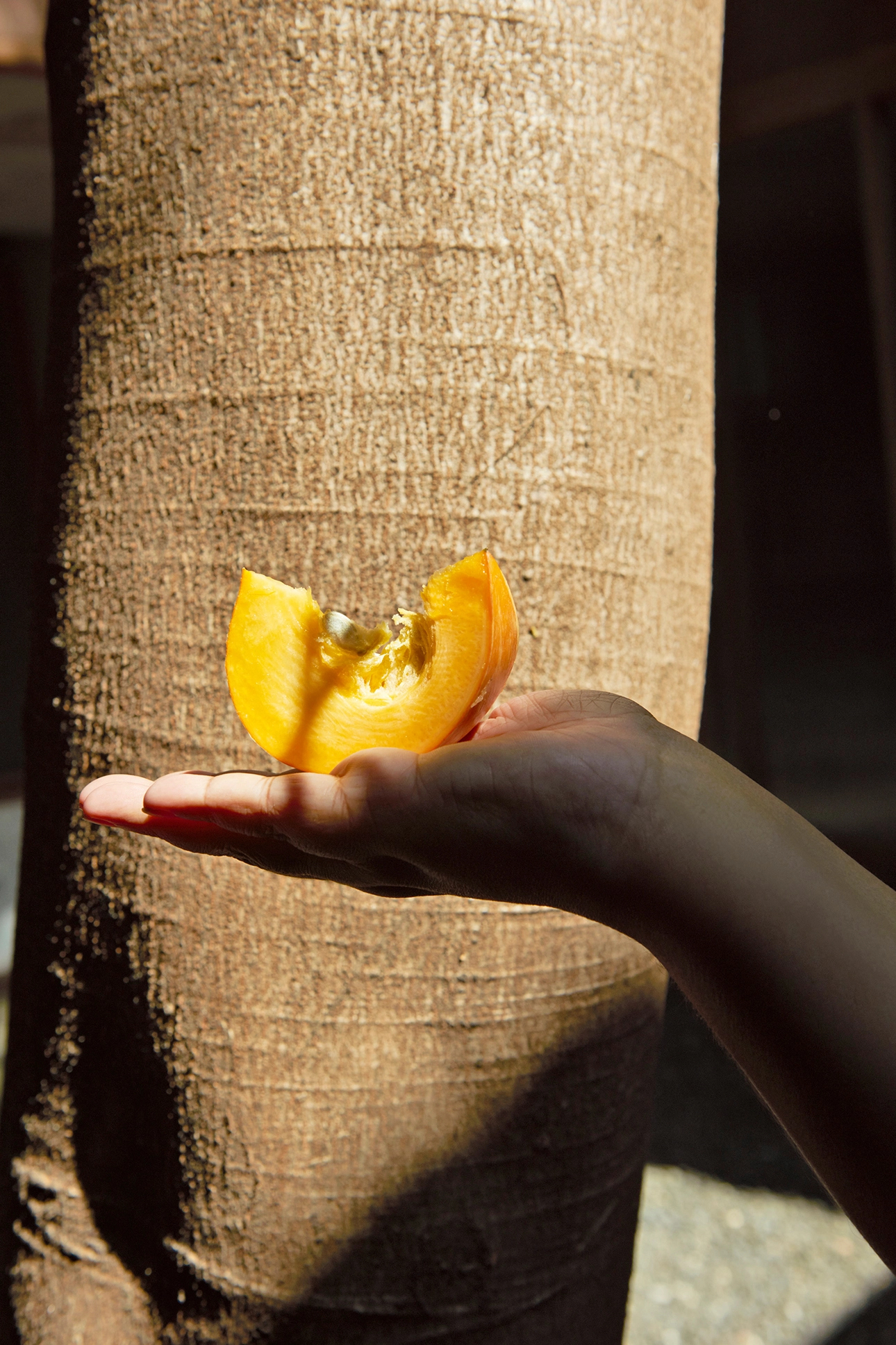
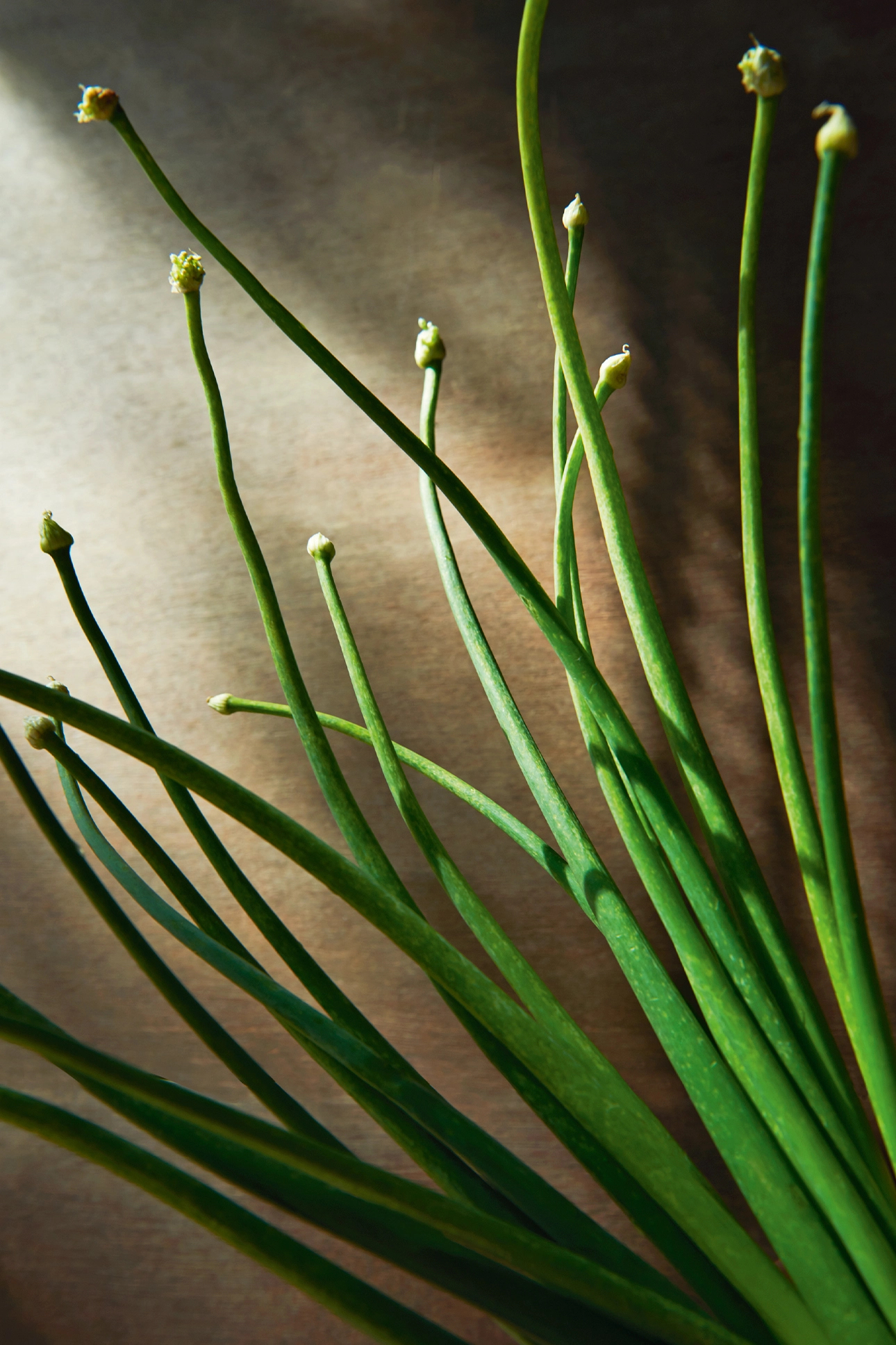
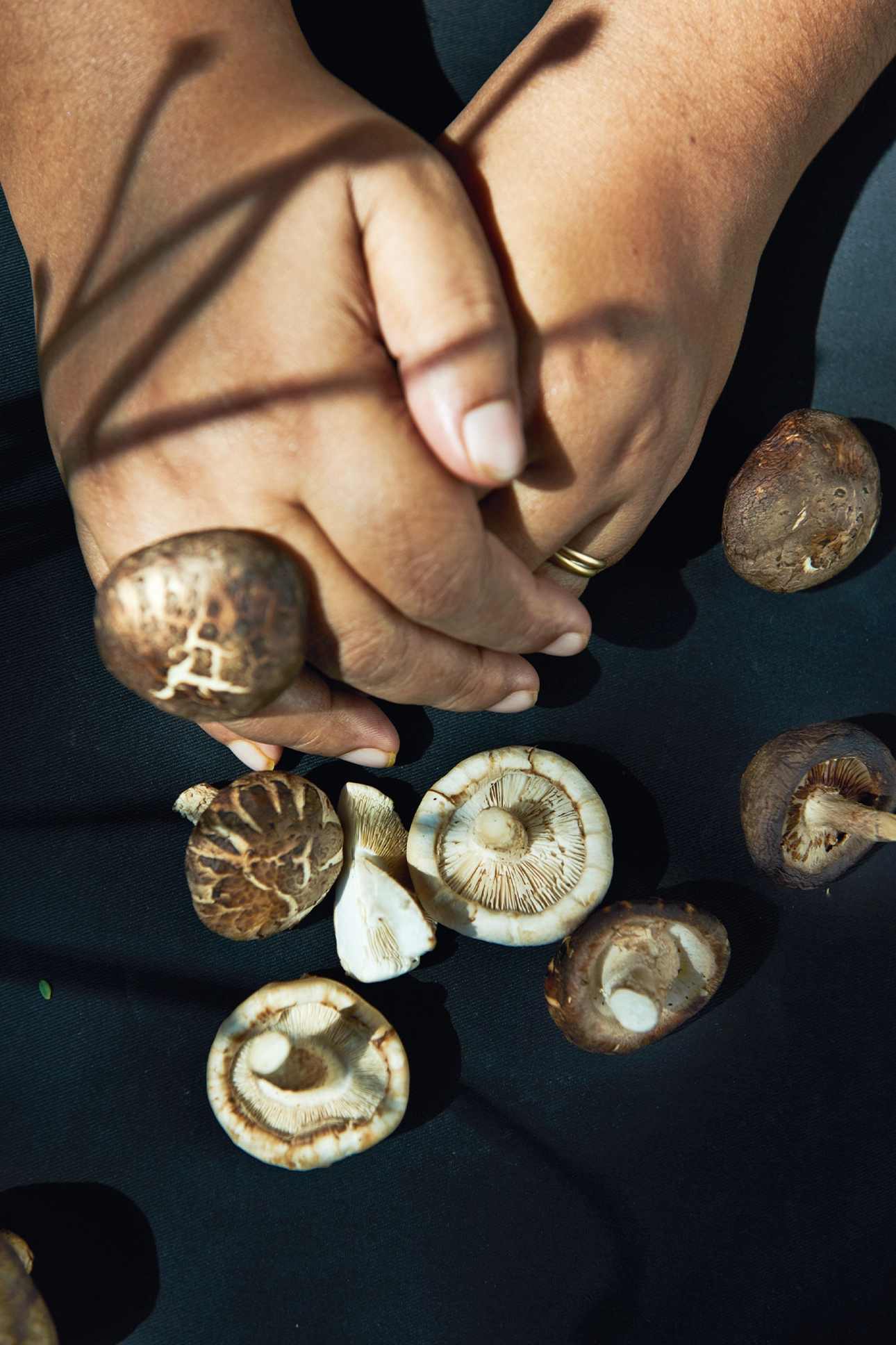
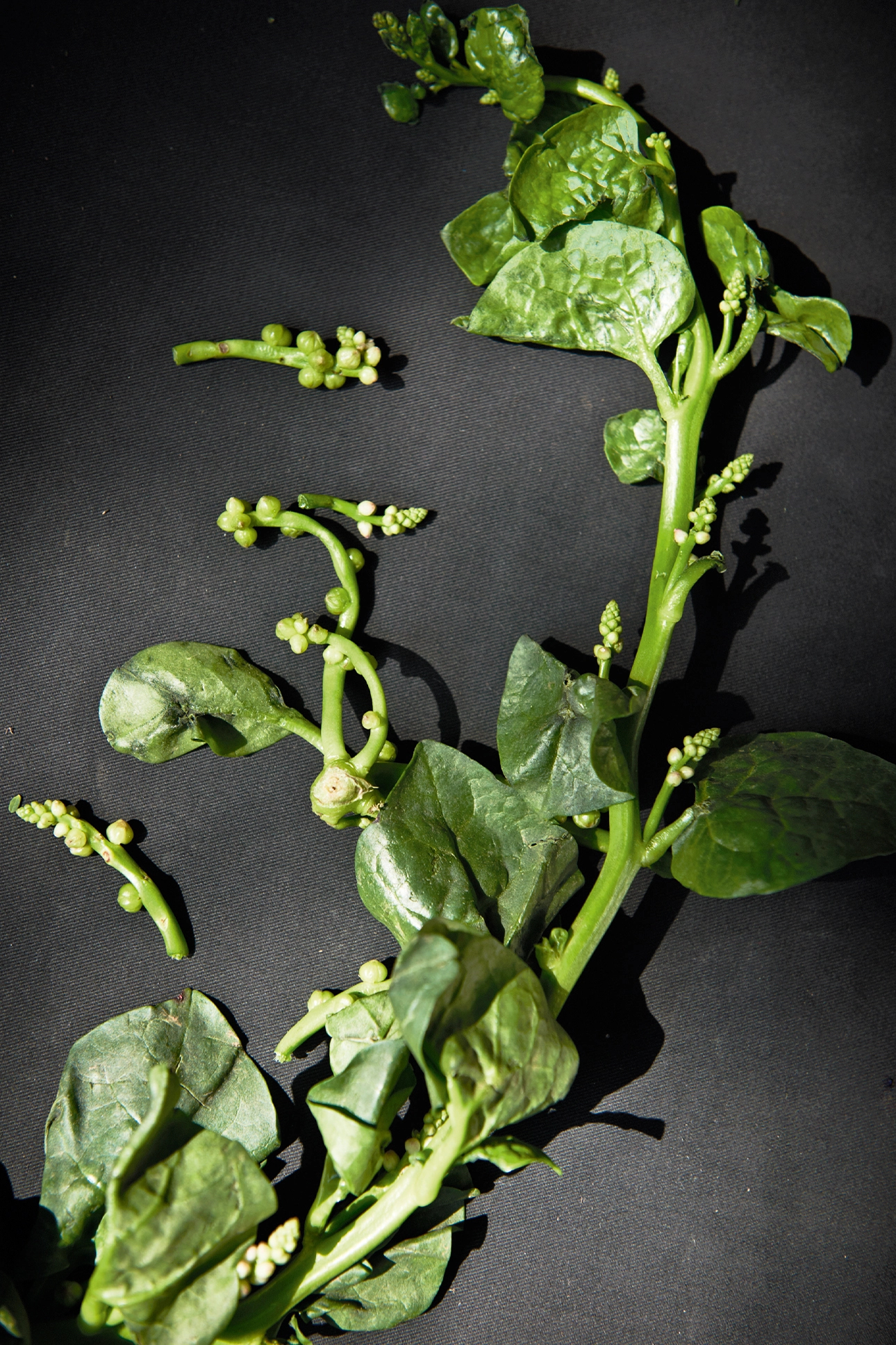
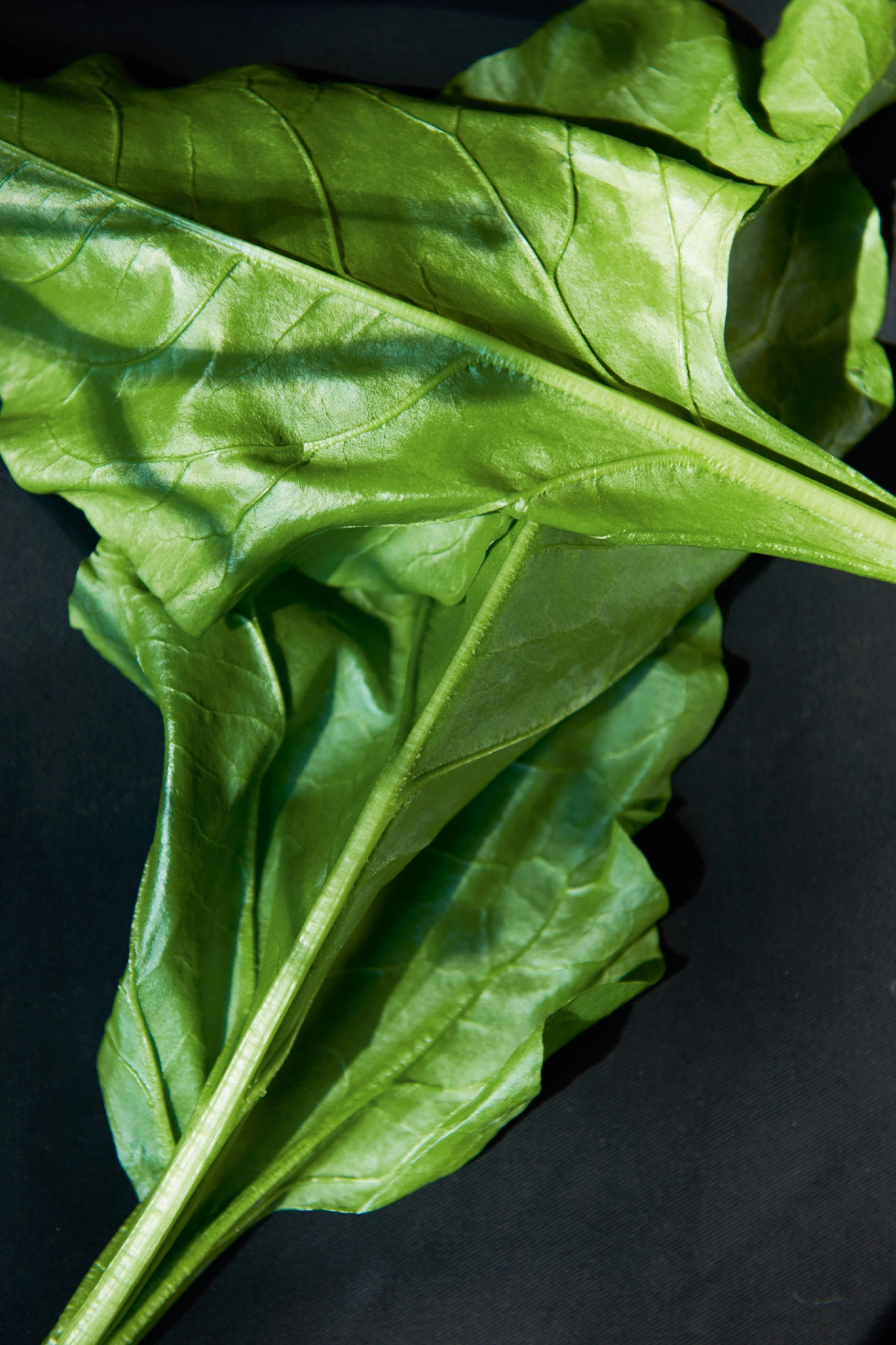
Rhea Mitra-Dalal
Visits The Market For….
Onion scapes or peyanjkoli… “Available seasonally in winter, this is something I look forward to every year. It is used in many Bengali dishes.”
Malabar spinach or pui shaak… “Widely used across the country in several Indian cuisines. The inflorescence is edible and is considered a delicacy among Bengalis who have a wide range of edible flowers in their repertoire.”
Green garlic… “I discovered this thanks to my husband. A winter crop, Parsis use it in many preparations. We use the entire plant from root to green tip. In Udvada (Gujarat) you can buy papad flavoured with this.”
Mushrooms… “So versatile, and there are so many kinds available these days, mushrooms make meal planning easier. I always have some mushrooms in my fridge.”
Pumpkin… “I disliked red pumpkin as a child, but now I quite love it. It’s an integral ingredient in Parsi classics like dhansak and is also used in many everyday Bengali preparations, be it a labra accompanying bhog’er khichuri (khichri made as an offering for a puja) or batter-fried to go with dal for an everyday lunch.”
Spinach… “Leafy greens form a major part of Bengali cuisine. Simply cooked with a tempering of plenty of garlic and a dried chilli or two, for me spinach brings back memories of my mom as she used to cook it often.”